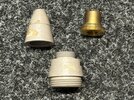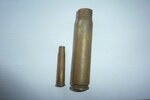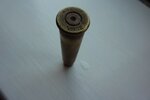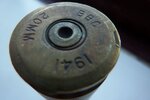










Evening all, yesterday I spent several hours on one of creation's best beaches. The 2Pr no 281 tracer igniter unit is dated pre WW2. There were bits of No 1, No 2 and No 13 plugs, as amended by EOD operations. There were bits of driving bands, mostly 25 Pr but in the 5th photo there is a different grip, perhaps American? Most of the SAA was .303 tracer and ball but there were also shorter ball bullets than .303 and more streamlined bullets than .303 (photo 8). Can anyone say what these are? The really intriguing bits for me are the circular items in photos 9 & 10 (roughly one inch / 25 mm in diameter). The remains of the fuzes appeared to be the No 119, rather than the 117. The small fuzes are No 250 for 20 mm Hispano Suiza. Most were No 250 Mk 2 but one was No 250 Mk 1. Anyone know the differernce between the two Marks?
Last edited:













